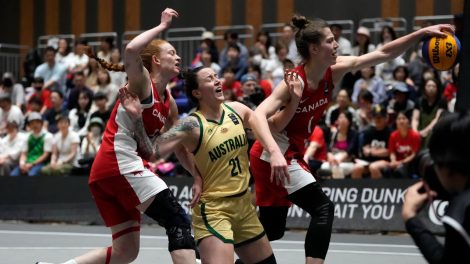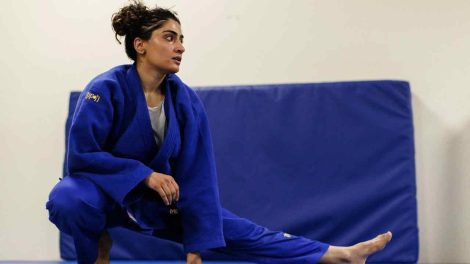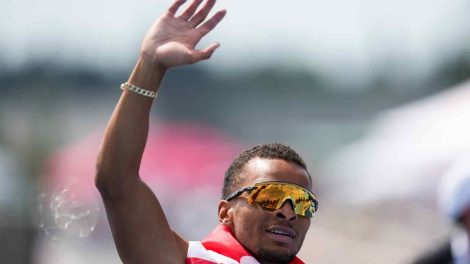TORONTO — You can take Michael Phelps and all his medals or any of the other Olympic aggregators, but the greatest Olympian of my time is Usain Bolt. Period.
Of course, there really is no wrong answer to the question that has been posed in the lead-up to the 2016 Rio Olympic Games and was brought into focus again this weekend when Phelps swam the final race of his career – and won – and Bolt then went out Sunday and won his third consecutive men’s 100-metre gold medal, in the process also serving as the host for Andre De Grasse’s coming out party. I mean, this is a pretty sweet choice to have to make – if you want to make it at all. Not sure if they’ve developed something like baseball’s WAR to judge athletes across sports (GAR – Greatness Above Replacement?) but I sure hope they haven’t. Arguments like this are so much fun.
This isn’t simply a matter of favouring a guy with humble origins in Jamaica over a white dude from the U.S., either; as some sort of developing world versus developed world thing. You can play that card if you want — and it’s tempting every time you hear that nauseating ‘U-S-A’ chant — but given the money Bolt has made, it has become a little timeworn. Plus, Phelps’ white privilege didn’t prevent him from having personal demons to fight.
No, I think it just comes down the fact that Bolt has never lost his humanity, never lost the gift for making people happy. His athletic brilliance and charm has made him a true World Citizen, a cross-cultural touchstone and the most famous and beloved athlete in parts of the world that don’t know about LeBron James or Lionel Messi. For three Olympic cycles, now, he has carried a burden no other athlete in the world carries: as long as he wins and passes all his doping tests, his sport is in good shape. He is the man who keeps the Justin Gatlins of the sports world away from the gold medals. And in these Olympic Games, by simple acts such as a hug and fist bumps, he seems to be gently nudging De Grasse into the spotlight.
Really, what the hell’s the point of being the fastest man in the world if you can’t have fun, especially when you leave a happy wake that brings others along with you. I’ve always liked my Olympians to spin as wide a narrative as possible, and nobody has done it like Bolt. Nobody has ever cast as big or as happy a shadow.

DOC MAKES A HALL CALL
Roy Halladay will be an interesting test case for Hall of Fame voters in 2019. He’s a slam dunk first ballot guy in my eyes, but the guess here is he might need two or three years to get it done.
Joining Halladay as a first-timer on the ballot will be Mariano Rivera, and Halladay’s case is a lot more nuanced than the New York Yankees closer, who will sail in. Halladay was a workhorse pitcher at a time when the definition of workhorse was undergoing a complete change – he led his league in innings pitched four times and complete games seven times, yet his 2,749 innings pitched would be at the low end of the Hall of Fame. Halladay’s 203 wins would be the second fewest of any Hall of Famer (behind Sandy Koufax), yet his winning percentage is better than that of Koufax, Jim Palmer and Bob Feller, among others.
The good news for Halladay is the wisdom of sabermetrics has seen “pitchers wins” properly devalued as a meaningful number – and with the application of measurements such as WAR, Halladay receives his due. In fact, you can make the case that his period of dominance echoes that of Koufax’s, although it was longer. And if you’re one of those who believes in career narratives, a first-rounder who gets dropped down to the lowest level of the minor leagues to rebuild his delivery from the ground up, comes back and has the misfortune to play for the Toronto Blue Jays during the height of the Yankees and Boston Red Sox’s dominance of the American League East, wins a couple of Cy Youngs and pitches a perfect game and post-season no-hitter isn’t bad copy. Plus, no links to steroids.
“It’s just so hard to know,” Halladay said. “Number-wise, I don’t know. I look at guys winning 300 games … and it makes sense. I don’t know what the criteria is … I’m so lost on it.”
And just in case Cooperstown has any questions, the fact Halladay’s post-season story was written in Philadelphia Phillies red doesn’t detract from his, ah, “blue period.”
“I’d go in as a Blue Jay,” said Halladay, who has spent time working with Phillies minor-leaguers and is interested in becoming more involved with the Blue Jays next season. “When I was here, things went the way they did and we were going in another direction to get things where they are now. Glad it worked out.”
QUIBBLES AND BITS
THE ENDGAME
I have followed with interest the debate about a perceived lack of Toronto FC coverage or respect in the Toronto media, and as a soccer fan and avid consumer of the sport I have no small amount of sympathy for the cause, despite the fact that it is not the responsibility of the media to offer charitable marketing to professional sports organizations. But – and I know I’m on sensitive ground, here – Toronto FC suffers from the same image issues that beset the Argonauts: they play in a league that exists in the shadows of bigger, superior, leagues that are easier for fans to consume without needing to leave the comfort of their couch. Beyond that, the Reds have been done no favours by scheduling quirks brought on by two renovations to BMO Field that have led to great swaths of road games. Tough to establish yourself in the public consciousness when you never seem to be home. And, as much as he was at times a big, bag of gas, having Tim Leiweke pull up stakes as president and chief executive officer of Maple Leaf Sports and Entertainment, Ltd., robbed the team of a corporate champion.









